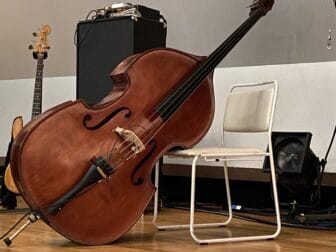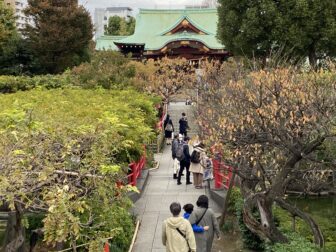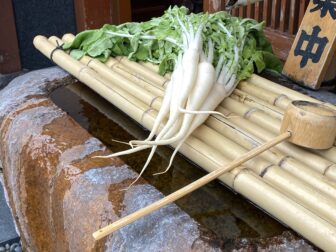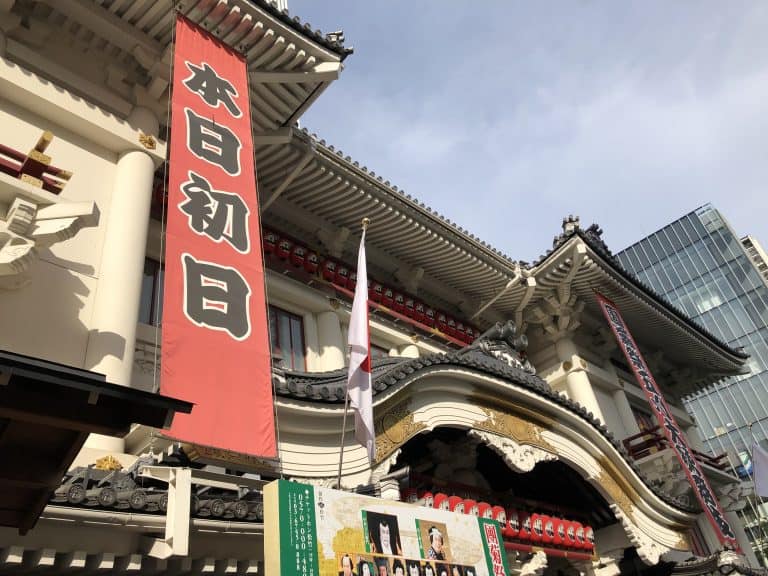
[ May 2019 ] During our stay in Japan this time, we saw Kabuki at Kabuki-za theatre in Ginza in Tokyo for the first time in our lives.
As a Japanese person, it is strange that I had never seen this traditional performing art until now, but I did not have a chance.
This time, a friend of ours who likes Kabuki arranged everything for us.
As a novice, I would not explain anything about Kabuki as it has got a long history and probably deep meanings, but would like to talk about our experience itself.
First, the friend asked if we wanted to see the day time programme or the evening one and added that for the evening programme, a child actor would make a debut, so it would be interesting.
So we decided to choose the evening programme.
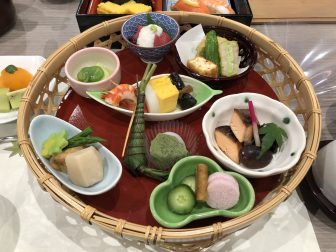
Next, we had to decide the seat.
They are not cheap: the box seat is 20,000 yen (£146.4, €163.6, $186.4), the first class is 18,000 yen and the second class is 14,000 yen.
This was a rare occasion, so we wanted the box seats, but they were sold out so quickly that we could not get any.
We had the first class seats on the second row on the first floor.
She booked the Bento (dinner box) for us, too.
There are a few choices and we chose “Hanakago Gozen (various foods in a basket)”, which was 2,600 yen.
Now, the performance day.
The front of the Kabuki-za theatre was full of people, but soon it was opened and we could get in in no time.
As soon as we got in, we had to rent the earphones and the subtitle machine.
The earphones were 700 yen with the deposit of 1,000 yen and the subtitle machine was 1,000 yen.
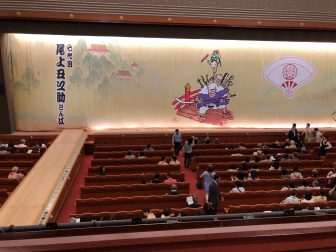
We looked for the programme and found that the booklet called “Sujigaki (scenario)” was the programme.
It was 1,300 yen and it looked too thick and difficult, so we did not buy one.
Then we went into the auditorium.
I was surprised to see that the stage was much wider than the theatres we are used to.
There was a catwalk on the left hand side of the stage.
As for the audience, some were dressed up in Kimono, but some others looked like they were going to the nearby supermarket.
There were four performances on the day and the first was “Kakuju Senzai“.
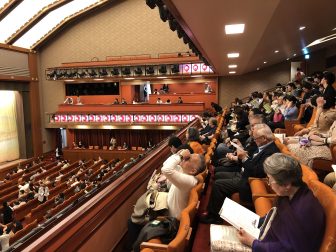
It was a dance mainly by a couple, including a dance of cranes.
Apparently, this performance had been created when the Emperor Showa was succeeded to the throne (1926).
Because the name of an imperial era has changed in May this year, they decided to perform this one.
The next performance was the highlight of the day and it is called “Ehon Ushiwakamaru“.
The 5-year-old boy, called Ushinosuke Onoe, made a debut in this performance.
He was a young member of the Onoe family, whose male members are almost all Kabuki actors.
He was really cute and did very well remembering his lines and choreography.
His father and grandfathers were on the stage, too.
After this programme, it was our dinner time.
We went up to the second floor to the restaurant where all the dinner boxes were ready.
Our friend’s name was shown clearly and we sat at that table.
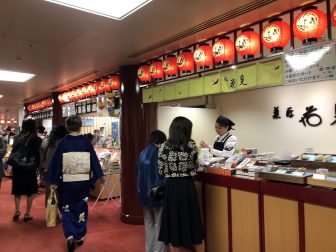
Because the time was limited, we could not relax and enjoy eating and chatting, but it was an interesting experience anyway.
After eating we went to the toilet and found many people queuing.
But there were many stalls, so we did not have to wait for long.
On this second floor, there were many shops in the corridor and I felt a strong Asian atmosphere.
After the interval, the first programme was a long and dramatic dance called “Kyokanoko Musume Dojoji“.
While dancing, a young girl changed into a snake, which was beautiful and dramatic, but it was too long and heavy for a novice like me, especially with a full stomach.
The last one was “Soga Moyou Tateshino Goshozome“, a complicated drama of the Edo period (1603 – 1868), which was very interesting, though it was a tragedy.
While the actors were performing, sometimes the audience called out.
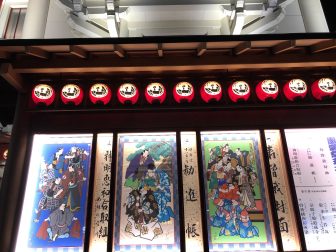
Apparently, they call the hereditary stage tiles of the actors.
The performances started at 4:30 pm and when we got out of the theatre, it was about 9 pm.
I told my friend my impression, “It was not as heavy and difficult as I had expected” and she said “It is originally a performing art for the masses”.
I see.
According to her, Kabuki used to be performed by women and then young boys, but the performances had become too sexy, so the the authorities banned women and young boys from performing.
That is why now Kabuki is performed only by men.
Anyway, it was really an interesting experience.

